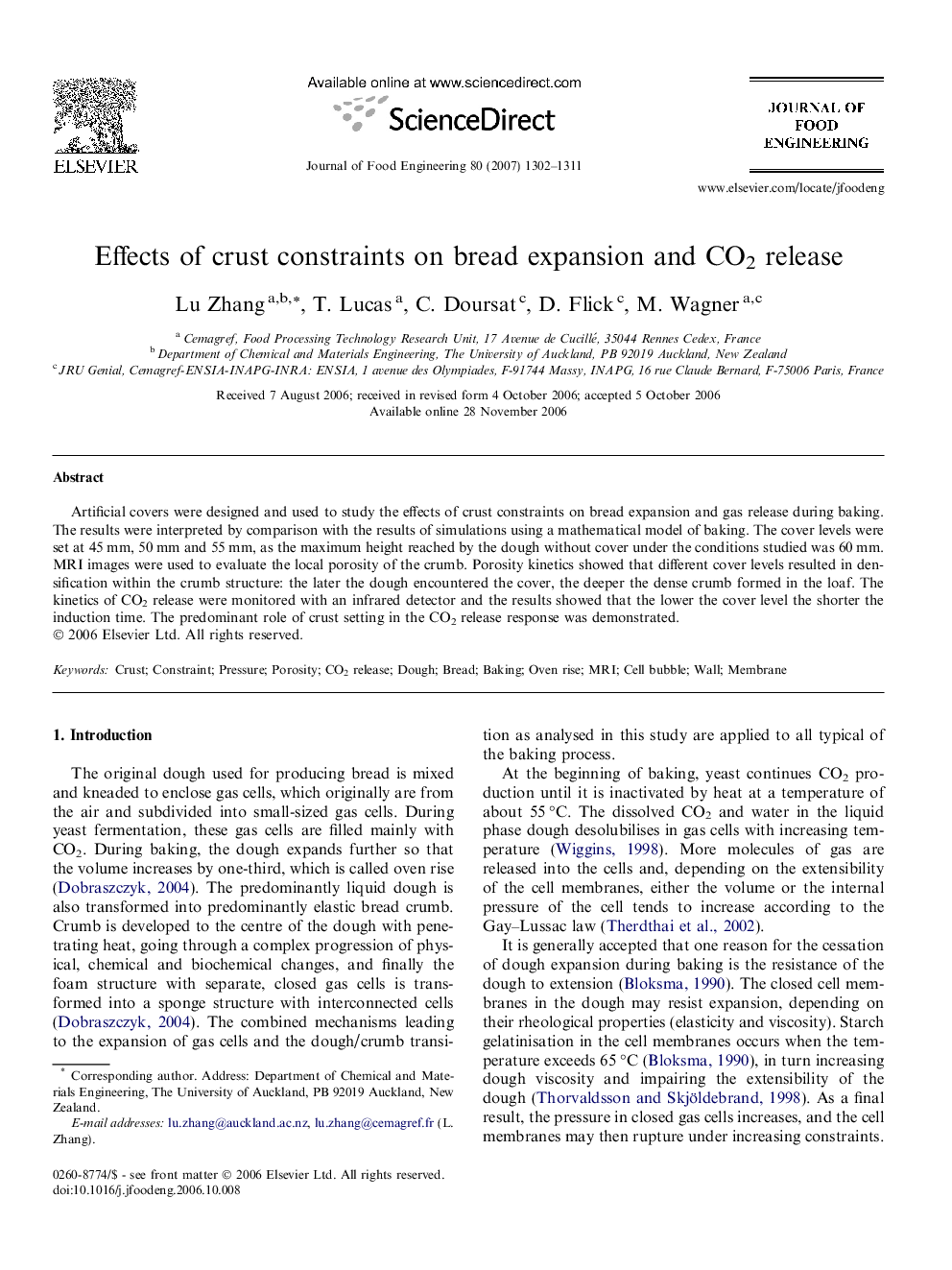| Article ID | Journal | Published Year | Pages | File Type |
|---|---|---|---|---|
| 225799 | Journal of Food Engineering | 2007 | 10 Pages |
Artificial covers were designed and used to study the effects of crust constraints on bread expansion and gas release during baking. The results were interpreted by comparison with the results of simulations using a mathematical model of baking. The cover levels were set at 45 mm, 50 mm and 55 mm, as the maximum height reached by the dough without cover under the conditions studied was 60 mm. MRI images were used to evaluate the local porosity of the crumb. Porosity kinetics showed that different cover levels resulted in densification within the crumb structure: the later the dough encountered the cover, the deeper the dense crumb formed in the loaf. The kinetics of CO2 release were monitored with an infrared detector and the results showed that the lower the cover level the shorter the induction time. The predominant role of crust setting in the CO2 release response was demonstrated.
